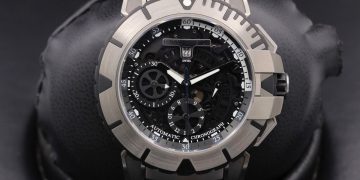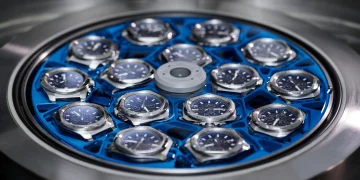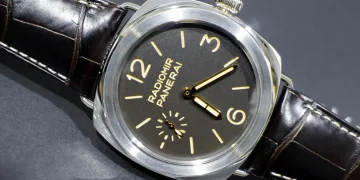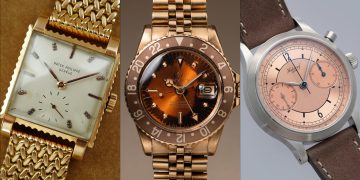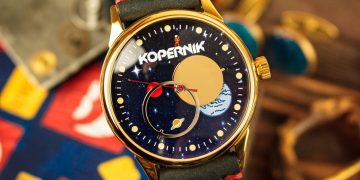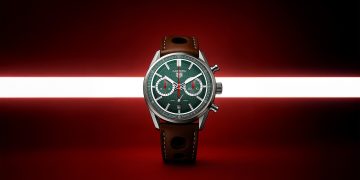Introduction: The Enduring Allure of Handcrafted Watches
In today’s modern world, technology is advancing at a rapid pace, with machines replacing many of the tasks once performed by hand. From automobiles to electronics, automation has revolutionized the manufacturing process, allowing for greater efficiency and precision. So, in this age of machines, it may seem counterintuitive that watchmakers continue to emphasize handcrafting. After all, machines can offer speed and accuracy, making the painstaking work of manual craftsmanship seem unnecessary.
However, in the realm of luxury watchmaking, there is still an undeniable charm to handcrafting. Watchmaking is an art form where human skill, experience, and attention to detail remain critical to producing the finest timepieces. For high-end luxury watches, the process of hand-finishing individual components is not only a tradition but a mark of the watchmaker’s expertise and passion for their craft. In this article, we will delve into the enduring appeal of hand-finished details in watches, examining the deep-rooted traditions of watchmaking, the delicate balance between tradition and automation, and why some aspects of watchmaking are simply too important to leave to machines.
The Legacy of Handcrafting in Watchmaking
The History of Watchmaking: A Craft Born from Precision and Tradition
The history of watchmaking dates back several centuries, with watchmakers passing down their knowledge and skills from one generation to the next. Luxury watches were once entirely handmade, with each component—whether it was the gears, springs, or dials—being meticulously crafted by skilled artisans. This handmade legacy still defines many of today’s most prestigious watchmakers, even as technological advancements have made it possible to produce watches with machines.
The idea of precision timekeeping was born from the need to create reliable and durable mechanical movements. From the earliest pocket watches to the most sophisticated complicated timepieces of the modern era, watchmaking has always been associated with both artistry and engineering excellence. This balance of creativity and technical prowess remains a hallmark of traditional watchmaking, even in the face of automation.
The Role of Handcrafting in Modern Watchmaking
In the modern era, while many aspects of watch production have been mechanized, luxury watchmaking still values craftsmanship at its core. Some of the world’s most respected Swiss watch brands (like Patek Philippe, Audemars Piguet, and Vacheron Constantin) continue to uphold their legacy by incorporating handcrafting into their production processes. Even though machines are often used to produce basic components, intricate processes such as engraving, polishing, and assembling movements are still carried out by skilled artisans. These watchmakers often spend countless hours perfecting each tiny part of the timepiece to ensure the quality and precision that consumers expect from luxury watches.
- High-end finishes, such as Côtes de Genève, perlage, and anglage, are hand-applied to bridges and plates of mechanical movements. These delicate touches are not just for aesthetics but reflect the true artistry and attention to detail that define a luxury timepiece.
- Engraving is another essential component of watchmaking, whether it’s the engraving of the brand logo or the personal inscription of a customer’s initials or name. This adds a unique and highly personal touch to each piece, reinforcing the notion that these watches are made for those who appreciate the craftsmanship behind them.
The Allure of Hand-Finished Details: Why It Matters
Artistry and Authenticity in Watchmaking
One of the most important reasons why handcrafting persists in watchmaking is the desire for authenticity. A hand-finished watch is not just a tool for telling time—it’s a piece of art. The touch of the artisan’s hand adds something that machines cannot replicate: a human connection. Watch enthusiasts and collectors understand that a timepiece with hand-finished details tells a story, reflecting the skill and dedication of the person who made it.
- Imperfect Perfection: While machines are capable of producing flawless, uniform results, the imperfections introduced by handcrafting are often seen as signs of authenticity and character. These subtle imperfections give each piece a unique identity, one that machines cannot replicate. In fact, some collectors specifically seek out watches with evidence of hand-finishing, as it demonstrates that a watchmaker has spent time and effort refining the piece by hand.
- The Human Touch: The connection between a watchmaker and the timepiece is deeply personal. Each hand-finished watch is, in a sense, a labor of love. The watchmaker’s craftsmanship is visible in the details—the way the angles of a bridge are beveled to perfection, or how the engraving on the caseback reflects the watchmaker’s unique style. It’s this intimacy that machines can’t provide.

The Uniqueness of Handcrafted Timepieces
For many luxury watch enthusiasts, owning a watch that was crafted by hand rather than by machine is a sign of exclusivity. A handcrafted watch stands apart from the sea of mass-produced timepieces available on the market. As consumers become increasingly aware of the differences between industrially produced products and artisanal goods, the appeal of handcrafted timepieces grows stronger.
- Bespoke and Limited Editions: Handcrafted watches often come in limited runs or as bespoke pieces. The uniqueness of a hand-finished timepiece, whether due to a specific design or a limited production run, is a key element that sets it apart from automated watches. For the wealthy, owning something unique and rare is not just about having something exclusive—it’s about possessing a piece of history and craftsmanship that few others can access.
- A Watch with a Story: A handcrafted watch is not just a timepiece—it’s a story. Each piece has a history behind it, whether it’s the traditional methods used to create it, the materials sourced, or the watchmaker who spent hours perfecting it. This narrative is an essential part of what makes a handcrafted watch more valuable than its machine-made counterparts.
The Balance Between Tradition and Automation
How Automation Has Enhanced the Watchmaking Process
While handcrafting continues to play a significant role in watchmaking, the reality is that modern machines have revolutionized the industry in many ways. Automation has enabled watchmakers to produce more precise components faster and at a lower cost, making it an essential part of the modern watch production process.
- Efficiency and Precision: Machines excel in tasks that require high precision and repetition. For example, the machining of basic components, such as movement parts or cases, can be done efficiently with the help of CNC (Computer Numerical Control) machines, which ensure that each part is produced to exact specifications. Automation is also ideal for tasks like polishing and brushing, which require consistent, repetitive movements.
- Production Speed: Automation has dramatically reduced production time, enabling brands to meet the increasing demand for watches. Automated processes, like assembly lines, have helped speed up the process without sacrificing the overall quality of the watch. This has allowed brands to remain competitive while still maintaining a level of handcrafted excellence in their high-end models.
The Harmony of Tradition and Technology
The key to modern luxury watchmaking is the ability to strike a balance between automation and handcrafting. Watchmakers now use technology to handle repetitive, labor-intensive tasks while reserving handcrafting for the elements that require artistic touch and finesse.
Many of today’s most prestigious watchmakers, such as Rolex, Audemars Piguet, and Jaeger-LeCoultre, incorporate a mix of automation and handcrafting. The use of precision machines to handle basic components allows watchmakers to focus on the intricate hand-finishing of the movement, case, and dial, elevating the final product to an unparalleled level of quality.
- Hybrid Manufacturing: Modern watchmaking involves a combination of state-of-the-art machinery for precision components and handcrafting techniques for the finishing touches. This hybrid approach allows watchmakers to deliver timepieces that are both high-performing and visually stunning, retaining the traditional craftsmanship that collectors and enthusiasts cherish.
- Human Expertise: While machines may assist in the production of certain parts, the expertise of the human touch is irreplaceable. The ability to judge the quality of a part, to refine it to perfection, and to add artistic detail is a skill that machines simply cannot replicate.
Conclusion: The Timeless Value of Handcrafted Watches
In the age of machines, watchmakers continue to value the importance of handcrafting. While automation has undoubtedly revolutionized the production process and allowed for increased precision and efficiency, the artistry and uniqueness of hand-finished details cannot be replaced. A luxury timepiece is more than just a tool to tell time; it is a work of art, a product of tradition, and a symbol of mastery.
For many, the allure of handcrafting lies in its ability to elevate a watch from a mechanical object to a personal masterpiece, a piece of history that connects the owner to a long-standing tradition of craftsmanship. As long as there are those who value authenticity, exclusivity, and artistic beauty, handcrafting will continue to play a vital role in the world of watchmaking, even in the age of machines.



